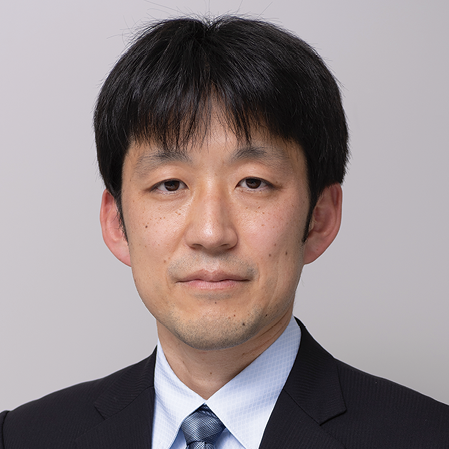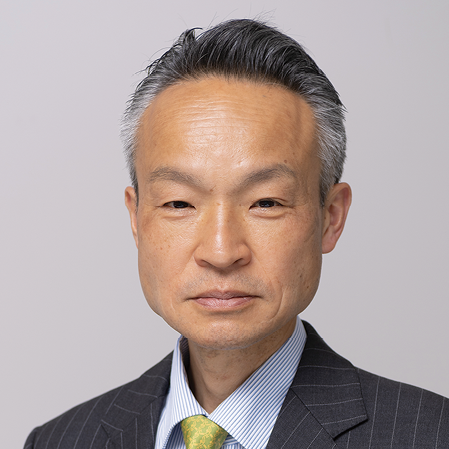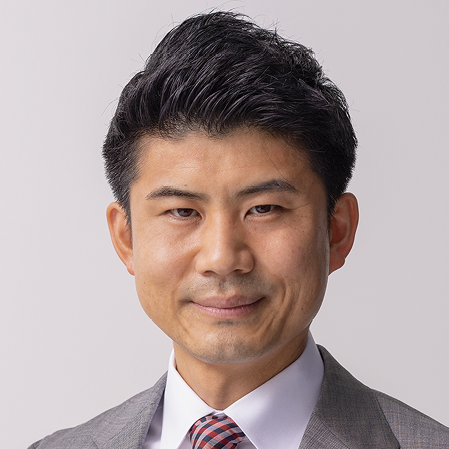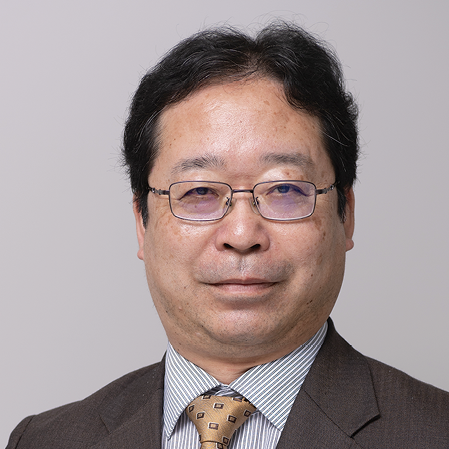COVER STORY:ACTIVITIES
What Sort of Railways are Needed to Underpin a Sustainable Society?
With widespread vaccination raising hopes that an end to the pandemic might now be in sight, the prospect of a post-COVID new normal calls for reforms in the railway systems that underpin economic and social activity as well as the movement of people. The world in which railway systems operate faces numerous challenges, including anti-infection measures and lower passenger numbers. Alongside this is the challenge of how to contribute to the SDGs and to carbon neutrality, with the upcoming the 26th UN Climate Change Conference of the Parties (COP26) due to be held in the UK in November 2021. How can Hitachi with its many years of involvement in railway systems, play its part in overcoming these challenges? Professor Takafumi Koseki from The University of Tokyo has engaged in wide-ranging research relevant to the railway industry. Here, leaders from Hitachi’s Research and Development Group and Railway Systems Business Unit sit down with Professor Koseki to consider where railway systems are now and to look ahead to their future.
 Takafumi Koseki, Ph.D.
Takafumi Koseki, Ph.D.
Professor, Department of Electrical Engineering and Information Systems, Graduate School of Engineering, the University of Tokyo
Graduated with a degree in electrical engineering from the University of Tokyo in 1986. Received a Ph.D. in electrical engineering from the Graduate School of Engineering, the University of Tokyo in 1992. Following positions as an associate professor at the University of Tokyo in specialties such as electronics and information engineering, he was appointed to his current role in 2013. His current research interests focus on the industrial applications of electrical, electronic, and control engineering, particularly electric trains and other public transportation systems, including linear drives and magnetic levitation. Professor Koseki is a member of the Institute of Electrical Engineers of Japan (IEEJ), the IEEE, the Japan Society of Mechanical Engineering, the Japan Society of Applied Electromagnetics and Mechanics, the Japan Society of Precision Engineering, and the Japan Railway Electrical Engineering Association.
 Keiichi Katsuta, Ph.D.
Keiichi Katsuta, Ph.D.
Deputy General Manager, Planning Office, Research & Development Group, Hitachi, Ltd.
Joined Hitachi, Ltd. in 2001. Following roles in research and development at Hitachi Research Laboratory and in development and certification for the European Train Control System at Hitachi Europe Ltd., he is currently engaged in coordinating research and development at the Center for Technology Innovation of the Research & Development Group. He is a member of the Institution of Engineering and Technology (IET), a fellow of the Institution of Railway Signal Engineers, a member of IEEJ, and a member of the Reliability Engineering Association of Japan (JREA).
IshikawaToday, I would like to consider the current state of affairs and issues around railway systems and what we can expect in the future. The first topic to address is that of the Sustainable Development Goals (SDGs), a topic with a close affinity to railway transportation. While Hitachi as a group is taking the initiative in working to achieve the SDGs, how are they being addressed by the Research and Development Group (R&D) in particular?
KatsutaThe 17 items of the SDGs are interrelated, so a comprehensive approach is needed to achieve them. Japan is also working on Society 5.0 as an initiative to aim for a future society in harmony with the SDGs. Since the Hitachi Group's business is directly and indirectly involved in most of this work, Hitachi’s R&D is generally aware of it.
For example, the Hitachi-UTokyo Laboratory established jointly by Hitachi and the University of Tokyo in 2016 is studying concepts and technologies that will help realize the SDGs and Society 5.0, primarily in the fields of urban development and energy. In the case of energy, this has involved looking at what sort of sustainable energy systems will suit the needs of the future, with activities that include the publishing of proposal documents and holding a collaborative creation forum for industry and academia. Recently, in response to the target of carbon neutrality by 2050 set by the government of Yoshihide Suga, the laboratory has posted a new version of a proposal document entitled “Toward Realizing Energy Systems to Support Society 5.0 (Ver. 3),” on its website*.
In addition to expanding the use of renewable energy, this proposal argues for the need to electrify as much as possible, such as mobility that is not currently powered by electricity, and the need to shift to a hydrogen economy. To achieve this, a major transformation of social systems, including infrastructure and basic technologies, will be required, so I believe that it is necessary to work together with the government and with numerous other companies and universities as well as Hitachi and the University of Tokyo to pursue multi-faceted research and development on many different levels.
IshikawaProfessor Koseki, how do you think about your research work in relation to the SDGs?
KosekiAt first glance, the 17 goals of the SDGs seem vague, and it is difficult to understand what we as researchers can do to contribute to them. I think it is important to incorporate them into our own research activities, projects, and work, and to link them to specific initiatives. Even if the results of each project are small, it is important to be aware that the entire society can be changed through collaboration and accumulation of our efforts.
 Satoru Inarida, Ph.D.
Satoru Inarida, Ph.D.
Senior Chief Engineer and CTO, Railway Systems Business Unit, Hitachi, Ltd.
Joined Hitachi, Ltd. in 1992. Following work on the research and development, design, certification, marketing, and coordination of electrical components for rolling stock at Hitachi Research Laboratory, Mito Works, and Hitachi Rail Europe Ltd., he is currently engaged in coordinating development strategy, development, and overseas projects relating to electrical components for rolling stock at Rolling Stock of the Railway Systems Business Unit. He is also involved as an expert in standard-setting work by the International Electrotechnical Commission. He is a member of IET and IEEJ.
 Tsuyoshi Yorishige
Tsuyoshi Yorishige
Director, Competence Center On Board Japan, Railway Systems Business Unit, Hitachi, Ltd.
Joined Hitachi, Ltd. in 2005. Following work on the design and development of onboard signalling, protection, and control equipment at Mito Works, he transferred to Hitachi Rail Europe in 2013 to work on development of the European Train Control System. His work included testing and certification using European rolling stock. He is currently engaged in coordinating the design and development of onboard signalling, protection, and control equipment for Japanese and overseas applications at the Signalling & Turnkey, Global Signalling division of the Railway Systems Business Unit.
IshikawaSix of the 17 SDGs are especially relevant to us working in the mobility sector. These are Goal 4: “Quality education,” Goal 7: “Affordable and clean energy,” Goal 8: “Decent work and economic growth,” Goal 9: “Industry, innovation and infrastructure,” Goal 11: “Sustainable cities and communities,” and Goal 12: “Responsible consumption and production” (see Figure 1). What practical steps are being taken to help achieve these through the railway business?
InaridaIn terms of Goals 4 and 9, Hitachi has long been involved in human capital and industry development, primarily through its operations in Japan, and this work has also extended to other countries in recent years. Hitachi has a rolling stock manufacturing facility at Newton Aycliffe in the UK, for example, and has provided funding for the establishment of a technical college in nearby South Durham. The technical college is contributing to the ongoing development of engineering education and the railway industry in the UK by providing training to 600 young technology students each year.
YorishigeI believe railways have an important role to play across all areas of education, including higher education as in this example. This is because the provision of transportation infrastructure has the potential to expand educational opportunities in some countries by increasing the number of people attending school, something that is also relevant to Goal 11. Hitachi’s mobility sector is also working toward Goal 12 in ways that pay attention to small details such as the use of recyclable materials.
As Professor Koseki noted, what matters is that the SDGs result in practical action and it is my hope that awareness in the workplace of how researchers are contributing to society as they go about their work will be a source of new ideas and innovation.
 Katsumi Ishikawa, Ph.D.
Katsumi Ishikawa, Ph.D.
Chief Engineer, COO Rolling Stock (Japan) Office, Railway Systems Business Unit, Hitachi, Ltd.
Joined Hitachi, Ltd. in 1993. He engaged in applied research into power semiconductors at Hitachi Research Laboratory, Advanced Research Laboratory, and Hitachi Power Semiconductor Device, Ltd. In 2013, he moved Mito Works to coordinate the development of electrical components for rolling stock and is currently engaged in coordinating areas such as new investment and global research and development for the rolling stock and electrical components businesses at the COO Rolling Stock (Japan) Office of the Railway Systems Business Unit. He is a senior member of IEEJ and a member of JREA.
IshikawaOne of the urgent issues for the railway industry is the business impact of restrictions on people’s travel imposed to prevent the spread of COVID-19. How this will play out in the future remains a matter of concern.
KosekiPeople are moving much less than they have in the past, with things like tests, entrance examinations, and faculty meetings at the University of Tokyo now being held online. It has, however, made it plain that teaching cannot be exclusively online while our experience over the past year has shown us how convenient online methods can be. The truth is, as well as being a place for curriculum-based learning, schools are places where people learn all sorts of different things through real-life interactions with teachers, classmates, and senior students. In technical education in particular, there are experiments that can only be done in a laboratory. This is why the University of Tokyo has made a shift since this April toward increasing the amount of in-person teaching as far as possible, something that has received a lot of positive feedback in student questionnaires.
Even companies such as Hitachi that have led the adoption of telework cannot operate on 100% telework, and I understand the company is taking all sorts of different steps to deal with this. Bearing this in mind, what we can expect is for people to find an effective mix of online and in-person practices such that, while the use of railways will fall, it will not fall all the way to zero.
Having said that, we also need to reform in response to environmental change. While the past emphasis in rolling stock development and traffic management has been on high capacity and faster speeds to improve efficiency, it will be necessary in the future to also consider factors such as social distancing and making the travel time more useful and comfortable for passengers. As the frequency of train travel falls, the style of railway travel becomes more important, creating a need for high added-value and a comfortable environment. Then, I think the question will be how to create a business model that is profitable in an environment of declining passenger numbers.
KatsutaSince the railway system has a lot of trackside equipment and its maintenance costs are high, one of the measures for railway operators to secure profits while the number of passengers is decreasing is to reduce their fixed costs. Hitachi is currently considering the concept of “zero infrastructure railway” based on digital technologies such as fifth-generation (5G) communications. This concept means that only the tracks are laid, the train runs on energy it creates, and information such as control and signals is transmitted wirelessly, which can be realized by combining elemental technologies such as fuel cell powered trains and radio-based train control systems. Hitachi believes that reducing infrastructure equipment will not only reduce fixed costs but also improve passenger services.
KosekiDigital technology will enable us to respond to the post-COVID era, not only with regard to railway-related equipment but also with regard to the business model of the railways. For example, as a means of improving profits and easing congestion, dynamic pricing, in which passenger fares are varied by time of day, has begun to be considered. It is uncertain at this point whether this will actually be introduced, but there is a possibility of developing a new rail fare system that makes use of digital technology.
InaridaDynamic pricing and off-peak fares are already widely used overseas and there are some lines in Japan that offer reward points or travel passes that can only be used at specific times of the day or on non-working days. As advances in technology make it possible to adopt ideas that would have been impractical in the past, I hope that Hitachi will look into this to come up with a wide range of possible options.
I also believe that a comprehensive approach is needed to enhance the value of the railways themselves, including the development of technology for decarbonization and coordination across all the different forms of mobility, including cars or escalators and elevators.
IshikawaThere is an expectation that railways in the future will contribute to achieving carbon neutrality which relates to Goal 7 of the SDGs. What are you doing in this regard in the area of rolling stock and signalling systems?
InaridaHitachi has high hopes for fuel-cell-powered trains. Some manufacturers have already started work on this overseas and the company is pursuing plans that envisage this technology being deployed globally. In Japan, Hitachi is currently working on joint development with East Japan Railway Company and Toyota Motor Corporation, with plans to commence local trials from 2022.
Hitachi is also developing Bi-Mode high-speed trains in the UK that use diesel engines to cope with a mix of electrified and non-electrified track, using this as a way to save energy and reduce emissions of carbon dioxide (CO2). The company hopes to further reduce the load on the environment by replacing these diesel engines with batteries in the future. It will continue working to improve the environmental performance of railways by leveraging the strength the company derives from its portfolio of both electrical and rolling stock technologies.
Hitachi is also taking steps to improve resource re-use in its railway cars, adopting aluminum as its main material because of its ease of recycling. This is on top of the progress it is making on weight reduction and on minimizing drag by measures such as enhanced front-end aerodynamics. Measures aimed at making electrical systems more energy efficient include the release of new traction systems that use silicon carbide (SiC) power devices and permanent magnet synchronous motors.
YorishigeOne example of how signalling systems can save energy is the driver advisory system (DAS) fitted to high-speed trains in the UK that advises how to keep the train on schedule and drive it in an energy-efficient manner.
In the case of traffic management, whereas the emphasis in the past has been on finding ways to reduce waste without compromising the primary requirement of maintaining tightly packed schedules, the priority being placed on saving energy means that railways are now seeking to operate in ways that optimize energy efficiency across all their lines. Examples include the dynamic headway practices trialed on the Copenhagen Metro in Denmark. This solution aims to combine comfortable travel with improvements in operational efficiency and works by tracking the movement of people at stations to estimate demand, using this as a basis for automatically optimizing the number of trains. In the future, it may well be that railways in Japan will likewise need to reduce power consumption across all of their lines by responding in real time to fluctuations in demand.
IshikawaProfessor Koseki, I understand your research has covered making optimal running curves and the use of brake control to facilitate energy-efficient operation.
KosekiWhen I first started studying how to make operation more energy efficient, I was told that such research did not make much sense since it was like trying to wring water out of a dry cloth, i.e., railways were already an energy-efficient means of transportation. The truth was, there was considerable room for improvement, since so little attention had been paid to energy efficiency in the way of driving trains. Moreover, the Great East Japan Earthquake prompted people to start thinking seriously about energy efficiency, which also increased interest in my research.
In simple terms, energy-efficient train driving is all about how to increase the use of regenerative rather than mechanical braking while still keeping the train on schedule. As this requires different driving practices from those used in the past, it makes operation more difficult. The initial trials involved using a simple onboard device that advised the driver when to use the brakes. The problem with this was that slow human reactions inevitably produced difficulty in braking control. Subsequent trials undertaken in partnership with Hitachi involved incorporating the function into automatic train operation (ATO). Here, driving trains automatically in accordance with energy-efficient operating patterns delivered energy savings of 16 to 17% compared to previous practice on lines where conditions were favorable. Deployed more widely, the technology could be expected to deliver considerable overall benefits.
InaridaSpeaking of techniques that use operating patterns as a way to save energy, Hitachi has been working with a customer to apply this to a monorail where it anticipates significant benefits from a DAS like that mentioned earlier. As it works toward the practical realization of automatic driving, Hitachi is aiming to build systems that are capable of modifying operating patterns dynamically, using telecommunications for interoperation with signalling equipment.
KosekiWhile advisory systems have the advantage of being easy to put in place, ultimately it is the correct way to introduce fully automatic train operation that offers the best opportunities for optimization. I believe that the value added by such automatic train operation, e.g., improvement of energy efficiency, and labor saving, will be important in the discussion of the automation of train operations.
InaridaThe other issue is safety. This is about more than just physical safety, with cybersecurity also set to be an important factor in the future. This will be true not just for traffic management, but also for rolling stock once automatic driving is adopted. Addressing this problem, it will also be required to draw on knowledge from other fields.
KatsutaIn terms of the environment, I think the highly efficient energy utilization technology used in electric railway systems can be utilized in other fields as well. One example is the e-highway concept in which an overhead wire is laid on an expressway to power electric trolley trucks. I think that substation technology in the railway field can be used for such a concept. In addition to energy-saving running technology for individual trains, technology such as group control that runs multiple trains while leveling the power load on the entire line may be applicable. Similarly, it is expected that the charging problem will increase as electric vehicles (EVs) increase in the future, but there is a possibility that railway technology can contribute to ensuring grid system stability.
KosekiE-highways and the zero-infrastructure railways we spoke about earlier are based on different concepts. I am not criticizing the direction of gathering intelligence in rolling stock, but I would like to say that while it is important to gather everything in rolling stock, it is also important to think about developing infrastructure. Our laboratory in the University of Tokyo is working on research into the non-contact charging of EVs as they are driving. Moreover, infrastructural support plays an important role in fully automatic operations for both trains and cars. Looking ahead to such a future, I believe that having a comprehensive portfolio of both forms of technology will be crucial for Hitachi to play an important role in the business field of mobility in the future.
KatsutaThat’s right. Especially when targeting mobility, I believe it is important to flexibly design a system that suits the location, taking into account its characteristics and how it is used by users. While considering both ideas based on different ideas, I would like to pursue a system that can create maximum value at that place where it is needed without sticking to either of those ideas.
YorishigeHitachi’s strength lies in how it can offer a full complement of products and systems that extend from the chip level, such as fail-safe central processing units (FS-CPUs), through onboard signalling equipment, wayside signalling equipment, and wireless communications for linking the two, as well as traffic management and passenger information. What matters is how we go about integrating these to enhance value for railways.
In the case of automatic driving, in particular, this can, as you noted, contribute to energy efficiency and workplace safety as well as labor saving. I believe we can facilitate progress across all areas of railway systems by incorporating practical knowledge from the workplace, including maintenance expertise, for example. To this end, we are putting in a big effort with the aim of combining not only train control, but also maintenance and traffic management to supply optimal railway solutions.
IshikawaHitachi has been actively deploying its maintenance services and turnkey business through its overseas operations. I believe this has been made possible by improving rolling stock and infrastructure technology. How do you see the overseas business going in the future?
YorishigeRecent times have seen a strengthening trend in the European railway industry toward operators, vendors, and government coming together to establish infrastructure platforms. Behind this lies a desire for ensuring technical and operational compatibility as much as possible, with the Technical Specifications for Interoperability (TSI) defining requirements for both rolling stock and signalling.
As these moves accelerate, it makes it increasingly difficult for vendors from Japan and other non-European countries to participate. For the railway business in Japan, meanwhile, the concern is that a lack of interest in such participatory industry-wide standard setting and interoperability will slow the pace of technical progress.
KosekiIn this regard, I believe that Hitachi's expansion of its global business through cooperation with European manufacturers is a great hope for the Japanese railway industry. Anyway, it is important for someone to pave the way. I look forward to seeing Hitachi establish a presence among powerful global railway system suppliers while respecting its long history in the railway business and the philosophy of our senior engineers.
YorishigeThank you. Hitachi is looking to strengthen its system integration capabilities together with the operations, service, and maintenance area, and I hope that Japan will be able to produce more people who can get actively involved in standards setting in the future. This is another reason why it would be good for industry and academia to work together.
InaridaHitachi is starting to put the structures in place for strengthening its involvement in railway standards and certification, especially in the field of signalling. Establishing standards, working through certification, and the negotiation power that comes with it are all important. This is an issue for all Japanese people and with your help I hope that we can develop the skills needed.
IshikawaYou have mentioned the subject of human capital development. What is happening in the railway system with regard to training and skills transfer?
YorishigeAs the railway industry has a long history and it is essential that legacy skills and expertise be considered in the development of new technology, we are looking for reliable ways to hand on these skills. As well as making use of the latest digital tools, we also need to place a high value on handing down tacit expertise and other types of life knowledge, learning from the excellent example set by older staff in forms such as the handwritten documents they have left for us.
For example, online lectures can provide training to many more people than in-person classes. What will be needed in the future, then, will be to make appropriate use of the different methods available, such as utilizing in-person teaching for practical skills such as how to produce drawings or consider algorithms.
KosekiAs a result of trial and error at our university, we have found that students are much more satisfied with real-time delivery of online lectures than with recorded videos. It seems that it is important for students to be able to ask questions on the spot, and it is also better for teachers to be able to interact with the students. For student experiments that have to be conducted face-to-face, we try to limit the number of students and conduct them in order.
I believe that these issues related to educational methods are common to all companies. I think that industry-academia collaboration in the form of providing the know-how accumulated through trial and error in our educational institutions would be effective.
IshikawaSpeaking of personnel, I am hearing of talk of staffing difficulties lately, especially with regard to maintenance and I believe labor-saving technologies are being intensely considered. What is your thinking on this topic?
KosekiI was a member of a governmental committee to study the maintenance of railways a couple of years ago. In the process, I interviewed various railway operators. As a result, it was found that the issues were common, but the ways to resolve them were different.
The common problem is that they have outsourced their maintenance work, which they used to do entirely on their own, and now that many years have passed. There is a lack of inheritance of know-how and philosophy due to the departure of veteran employees, and a shortage of new skilled engineers.
There seem to be two diametrically opposed directions for dealing with this problem. One is to standardize equipment and maintenance processes while maintaining outsourcing, and to strengthen condition monitoring and condition-based maintenance (CBM). The other direction is to go back to the old ways again. However, they say that neither direction is easy. Therefore, to be honest, I am not sure about the feasible solutions.
KatsutaIn fact, we have heard the needs of various customers, not limited to the railway field, regarding support for maintenance technology transfer with digital technology. At Hitachi’s R&D, we also consider it to be one of the issues that society is expected to solve and are focusing on that area.
IshikawaWhile railways and power electronics have in the past tended to cover a small number of educational subjects and to involve small numbers of people, my sense is that the number of researchers has been rising lately. Hitachi intends to contribute to progress across all aspects of railways by working with the industry and with researchers such as Professor Koseki to put an even greater effort into human capital development as well. Thank you for your time today.